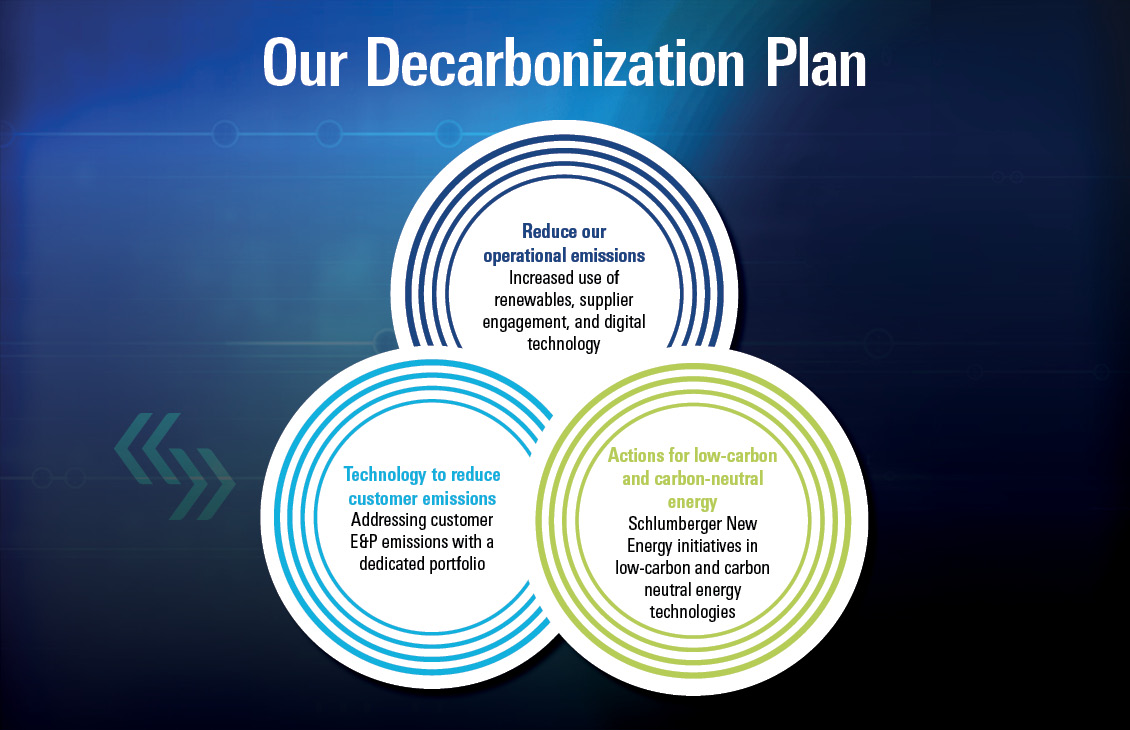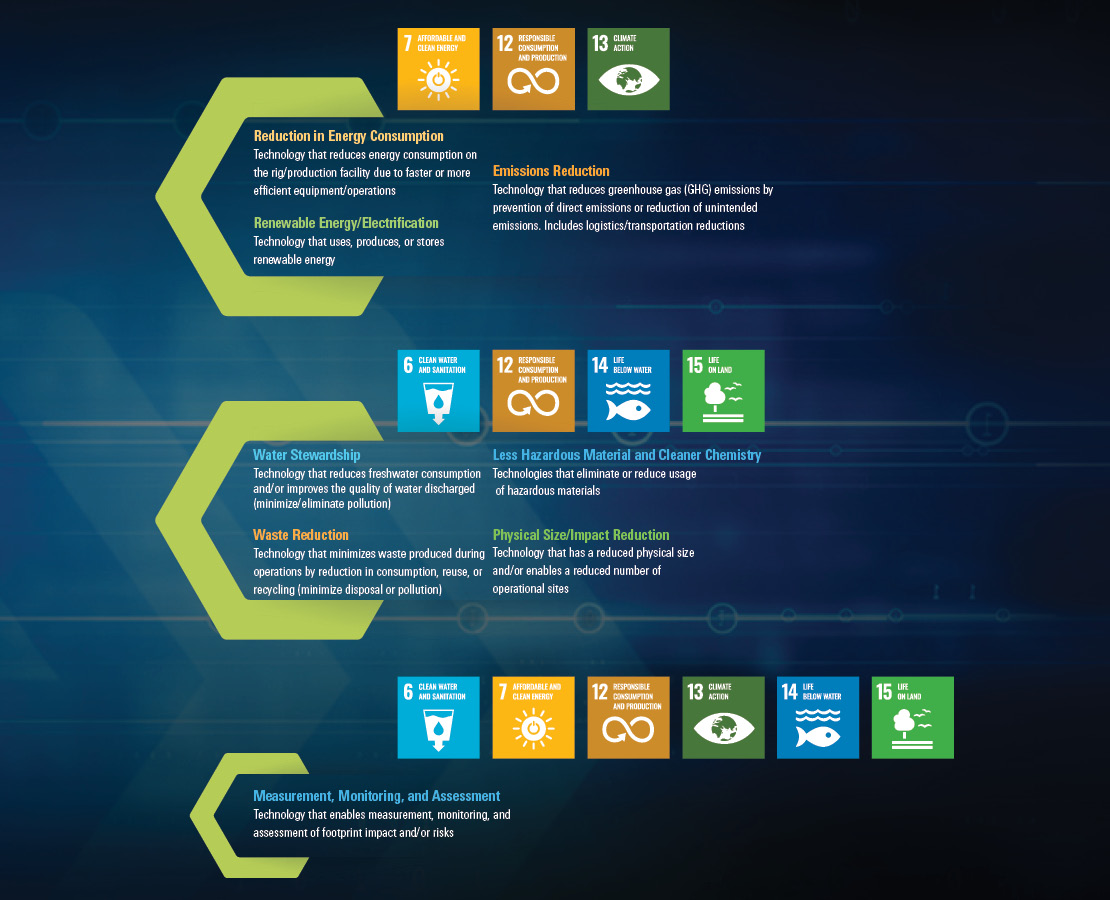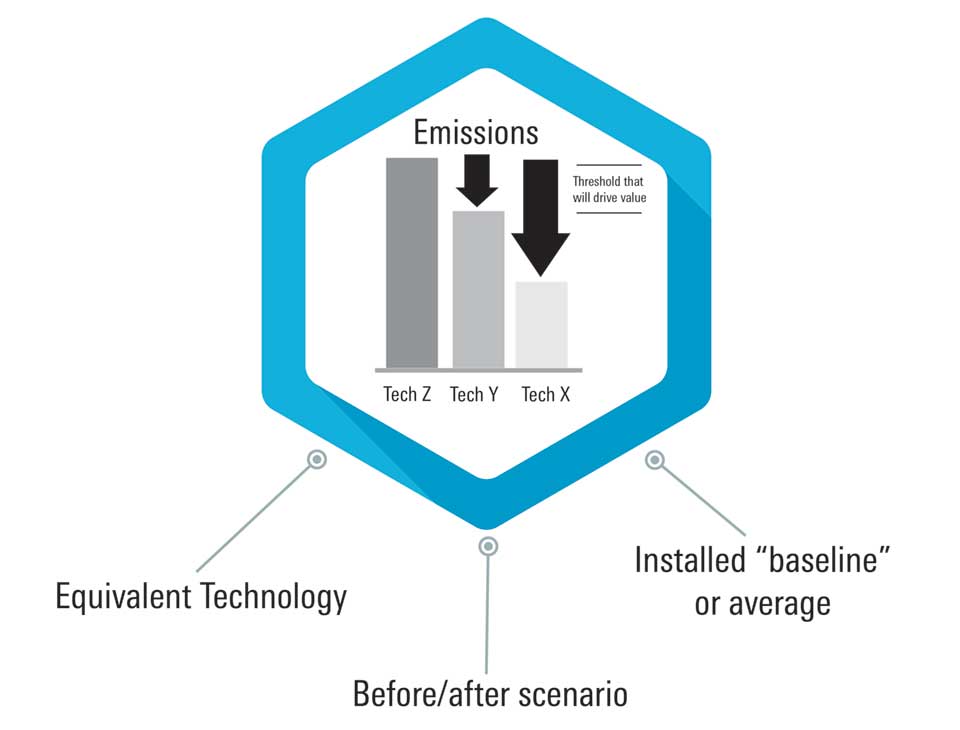Quantifying Environmental Impact of Transition Technologies
Published: 09/28/2021

Quantifying Environmental Impact of Transition Technologies
Published: 09/28/2021

Decarbonization of the entire oil and gas industry value chain, alongside other global industries that have a significant emissions footprint, will be fundamental to avoid the worst effects of climate change. But how will we achieve this, and how will we prove our efforts to industry stakeholders who are demanding transparency? Answering these questions will be critical to effectively play our part in global efforts to reduce emissions.
As a technology company known for its history of innovation, Schlumberger has a critical role to play in engineering solutions to help address this challenge. We recently announced a decarbonization plan and commitment to achieve net-zero greenhouse gas (GHG) emissions by 2050. The plan incorporates actions to address our own emissions, ventures in new low- and zero-carbon energy sources, and technologies and solutions that offer a pathway for our customers to reduce their emissions in oil and gas operations. The portfolio of products and services in this latter category are known as Transition Technologies.


As our decarbonization plan was taking shape, we recognized how crucial it would be to not only understand the details of our own carbon footprint but also to understand the impact our technologies can have on our customers’ operational emissions.
Today, Schlumberger has a robust, science-based methodology to quantify the reduced impact that our technology has on the environment and help guide our customers’ sustainability decision making.
Transition Technologies
Our Transition Technologies portfolio aims to reduce emissions and improve sustainability within our customers’ operations while simultaneously driving performance improvements. The portfolio is divided into five themes targeting sustainability challenges and opportunities across the oil and gas industry value chain:
- Address Fugitive and Vented Methane Emissions
- Minimize Well Construction CO2 Footprint
- Reduce or Eliminate Flaring
- Full Field Development Solutions
- Electrification of Infrastructure.
Before aligning technologies and solutions for this portfolio, we needed to ensure that they would have a quantifiable impact. The problem was that a single, common quantification methodology applicable to the varied scope of operations within the E&P life cycle simply didn’t exist. To overcome this, we created our own by combining existing industry methodologies, including those from the GHG protocol, the Intergovernmental Panel on Climate Change (IPCC), and the International Energy Agency (IEA), with those more specifically tailored to our operations.
Creating a framework for quantification and qualification
We began with a basic framework aligned to six of the United Nations Sustainable Development Goals (SDGs) that are most applicable to our technologies. To support these, we defined eight sustainability attributes that more easily enable direct impact comparisons:
- emissions reduction
- reduction in energy consumption
- electrification of infrastructure
- measurement, monitoring, and assessment
- less hazardous material and cleaner chemistry
- water stewardship
- waste reduction
- physical size and impact reduction.


The framework was initially used to identify more than 100 products and services from across Schlumberger for potential inclusion in the Transition Technologies portfolio. These were then prioritized for impact quantification. At this early stage, a fundamental consideration was developing a consistent identification and qualification approach applicable to different types of operations.
Today, the methodology has evolved to be able to facilitate detailed and quantified comparisons, using the framework's attributes, between the environmental impact of the technology being qualified and a similar reference technology, established industry standards, or a before-and-after scenario. This process ensures a consistent and accurate quantifiable comparative analysis.


Developing a credible methodology
Building a credible methodology hinges on three crucial factors: transparency of scope, validity of scope, and robust data to inform the comparative calculations.
We need to be sure that the technologies and scenarios involved in the comparison are valid real-world options, and it’s also important that the right phases within a technology’s life cycle are considered. Lastly, it’s critical to ensure that the data driving the comparison is accurate and consistent.
For impact quantification of a given technology, these aspects are covered during a thorough and robust technical review process involving our domain and engineering experts. Then we document the review findings and the data, methods, and reference so that it can be repeated. In many cases, multiple review iterations are required before a sufficiently accurate quantification is achieved.
To streamline and standardize future work, we’ve focused on defining the impact of “building block” operations, such as rig emissions, fuel consumption, and emissions from flaring, that consistently influence the quantification process across a range of applications. However, even their impact can be challenging to define. Rig emissions will vary depending on many factors including geographical location, whether the rig is drilling or tripping or engaging in another activity and the depth and hole size of the well. Flaring emissions will vary with fluid type, burner combustion efficiency, and other factors. Balancing this complexity with a pragmatic, standardized, and useable impact definition for these activities is challenging in itself.
As the qualification process has matured, we’ve gained a better understanding of how the technologies rank in terms sustainability impact. In some cases, if the numbers didn’t look valuable, then we didn’t proceed with that qualification. For new technologies, we are working to embed this framework into our new product development processes.
Lessons learned
The fact is that this topic is new to a lot of people in the company, and there is a lot of enthusiasm for it. From this perspective, the quantification process itself is more than just a methodical, qualification process; it’s truly a classic learning experience. We’re looking to channel this enthusiasm, while still ensuring a consistent and credible approach.
As we got into the details of qualifications, it became easy to convince ourselves that we had a fantastic solution. We had to make sure the right people were involved to keep a realistic eye on all the background assumptions that led us to the qualifications.
Looking forward, we are working toward embedding sustainability in the development process for all our new products and services. For this, we are combining a detailed knowledge of our footprint with a customer-centric approach to determine key industry focus areas in the near-, mid-, and long-term. This understanding, together with this quantification framework, will be key pillars in our success.
Whether it’s related to existing products and services or the development of new ones, the core objective of the Transition Technologies portfolio is to provide customers with the most optimal impact-reducing solution for their oil and gas operations. Consistently quantifying this impact is fundamental to this effort, and we will continuously work to refine our capabilities and procedures to do exactly that.

